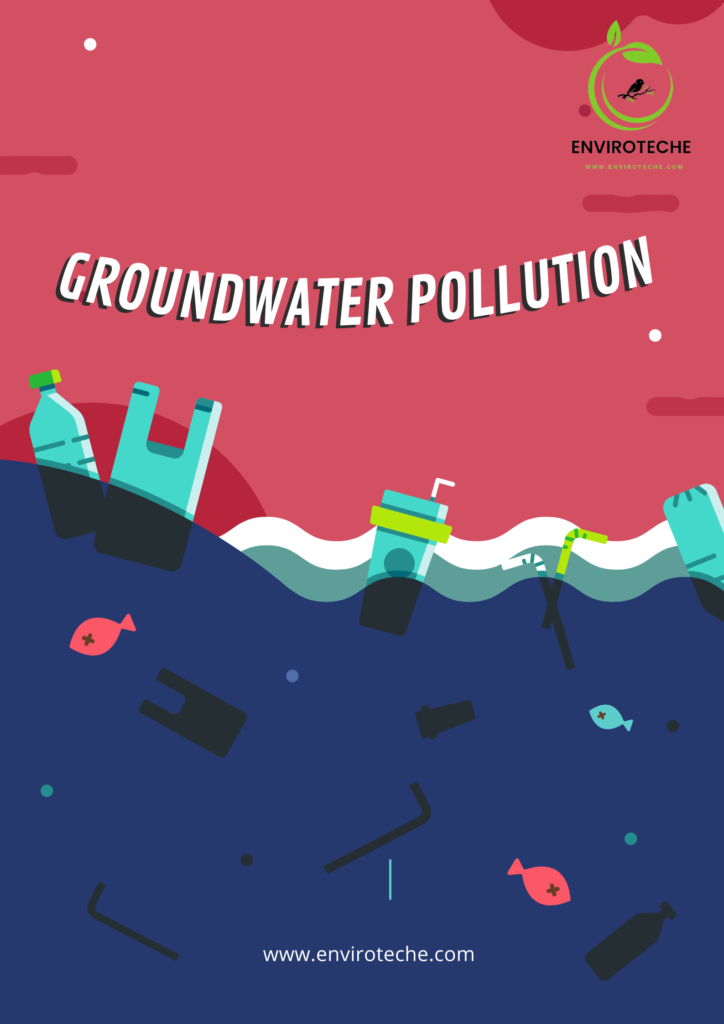
Groundwater Pollution
Water is a colorless, inert liquid that can be used for drinking, shaving, and other purposes. Rain descends from the clouds and gathers in lakes, streams, and oceans. Water has been on Earth for billions of years. The reason is thought to be water flow from cometary impacts and volcanic outgassing. When the Earth cooled, water vapor in the atmosphere condensed into seas, making the early Earth hot and useless. The UN Secretary-General stressed the value of having a supply of clean drinking water in a media release on World Water Day in 2002.
Importance of Groundwater in our daily life
Over 5 million individuals suffer respectively year from diseases brought on by contaminated water, while an estimated 1.1B people have nonexistence access to clean water to drink and 2.5 billion do not have access to adequate sanitation. About the average number of people who die in conflicts every ten years. Too frequently, people consider water to be a free good. Over 5 million people die once a year from diseases brought on by contaminated water, and an valued 1.1 billion people do not have access to clean water to drink or 2.5 billion do not have access to adequate sanitation. About the number of people who die in conflicts on average ten times a year. Too frequently, people consider water to be a free good.
Life without water
Cells require water as a necessary component. It acts as a solvent for a variety of enzyme processes, promotes the flow of nutrients and waste products between cells, and supports the preservation of the structural integrity of distinct cell components. Water can absorb and release heat evenly because of its large heat capacity. This element is required to control Earth’s temperature as well as the temperature of living things. Extreme temperatures would be fatal to life without water.
Water pollution sources
Water pollution is mostly caused by human activity (Hammer, 1986). The primary cause is the irresponsible disposal of personal, business, and municipal garbage into lakes, rivers, streams, and other bodies of water. An projected 2 million tonnes of sewage and other seepages are dumped into the ocean each day. The issue is more severe in poorer nations, where more than 90% of untreated industrial waste was generated in 2006. Of the 6634 industries in Pakistan that have been identified, 1228 are thought to be extremely polluting. The high concentration of organic and hazardous materials in industry waste effluents has made Pakistani industries a major source of water pollution. The industries that contaminate water the most are those in the textile, pharmaceutical, and ceramic sectors as well as petrochemicals, food, steel, oil, sugar, textile, fertilizer, and tanning industries.
Major pollutants of water pollution
Numerous compounds are classified as active water pollutants and fall into various categories. The most prevalent of them are water-soluble radioactive substances, pathogens, inorganic pollutants, and anions and cations (nitrate, sulfate. Furthermore, it’s thought that organic substances like oil and pesticides pose a risk to the water’s cleanliness. All of these substances are poisonous, and if they accumulate to dangerous levels, they can have negative effects on both people and other living things in the environment. Pakistan’s water quality is seriously threatened by bacteria, pesticides, hazardous metals like Ar, Fe, Cd, and Ni, and in certain areas, nitrates and fluorides.
Bacteriological contamination
Water is typically subjected to microbial examination in order to identify coliforms, either total or fecal. Although coliforms are frequently found in the environment and usually do not pose a threat to humans, their existence serves as a sign that water supplies may be contaminated with pathogens and bacteria that cause illness. No. According to Farooq et al. (2008), the presence of E. coli and fecal coliforms indicates that human or animal wastes have contaminated the water. Total and fecal coliforms are required to be absent from 100-millilitre samples of water, or 0 counts per 100 milliliters, in accordance with WHO standards for public drinking water (WHO, 1993).
Pesticides
Over the past 40 years, pesticide use has increased significantly worldwide. In order to increase crop yields and improve crop quality, it aims to protect crops against insect infestation. Pesticides arrived in Pakistan for the foremost time in 1954, with 254 metric tonnes of formulation . Then, throughout the late 1960s and early 1970s, thousands of tonnes of pesticides were imported from Europe and the USA; however, some pesticides, such as benzenehexachloride (BHC) and dichlorodiphenyltrichloroethane (DDT), were made locally (Ahad et al., 2009).. ). Pakistan is estimated to use 70,000 tonnes of pesticides yearly, and that figure is expected to increase by 6% year, according to WWF (2007). Cotton crops receive over 75% of all pesticide applications. The remaining twenty-five percent are used for other crops such fruits, vegetables, sugarcane, tobacco, maize, and paddy rice.
Retention tanks: A subterranean or above ground, and they can hold any kind of liquid, including chemicals, oil, and fuel. It is estimated that there are 10 million storage tanks buried in the US; these tanks could eventually rust, crack, or leak. If the contaminants leak out and reach the groundwater, serious contamination can result.
Septic systems. Systems for the on-site disposal of wastewater used by buildings other than those connected to the municipal sewage network, such as homes and offices. Septic systems are designed to let human waste slowly and naturally flow underground. A badly designed, installed, maintained, or sited septic system can leak bacteria, viruses, household chemicals, and other pollutants into groundwater, which can lead to serious problems.
Uncontrolled Hazardous Waste. There are thought to be more than 20,000 unmanaged and uninhibited hazardous waste sites in the US today, and the number is predicted to rise yearly. Groundwater contamination may result from hazardous waste sites if barrels or other containers containing dangerous compounds are left lying around. In the case of a leak, these contaminants may eventually seep into the groundwater through the soil.
Lands devoid of life. Landfills are the residences where our garbage is engaged to be buried. To keep contaminants out of the water, landfills have a protective layer at the bottom. However, if the layer is missing or broken, waste pollutants (including paint, household cleansers, car battery acid, etc.) could leak into the groundwater.
Air contaminants. Pollutants from other cycles, such as those in the atmosphere or surface water bodies, may eventually find their way into our groundwater sources because groundwater is a component of the hydrologic cycle.
Water pollution and human health
Water contamination is one of the leading causes of problems with human health. 2.3 billion people are affected by illnesses caused by contaminated water worldwide (UNESCO, 2003). The population of emerging countries is over 2.2 million. Individuals who use inadequate sanitation or drink tainted water lose their lives every year (WHO and UNICEF, 2000). Infectious and parasitic disorders associated to water account for 60% of infant deaths globally.
Environmental Legislation in Pakistan and its effectiveness
The first environmental protection law now the country was the Pakistan EPO (1983), also known as PEPO 1983 (GoP, 1983). This law also led to the establishment of two organizations: the (PEPC) and the (Pak-EPA). Additionally, this regulation helped popularise the idea of environmental impact assessments across the country. Ten years after the group’s founding, in 1993, PEPC held its inaugural meeting, demonstrating a lax approach to its execution.
The National Environmental Quality Standard (NEQS) and the subsequent establishment of the maximum allowable levels for various contaminants in municipal and industrial acquittals and emissions were encouraging developments from the PEPC’s inaugural meeting. In order to govern and oversee issues of environmental preservation inside the country, the Pakistan EPA 1997 (PEPA 1997) was ratified in that same year.
About the Author:
Aila Zahid1 ,2Muneeb
1Department of Soil and Environmental Sciences, University of Agriculture Faisalabad
2Department of Environmental Sciences, Government College University Faisalabad
Check Other Scholarships:
- FREE Earth-inspired courses
- The Graduate Application Portal for King Fahd University, Saudi Arabia is open.
- International Excellence Scholarship 2023-24
- Scholarship in USA
Groundwater Pollution Groundwater Pollution Groundwater Pollution Groundwater Pollution Groundwater Pollution Groundwater Pollution Groundwater Pollution
